After a good restful sleep at
the Waterbury Quality Inn, Chris and I had some extra time this
morning to grab a nice breakfast at the hotel breakfast bar.
After eating we packed the car and headed north on Rt 8 to our
first stop. By night fall I'll have been in five states today.
Now we are in an area that was once was known as
"the Switzerland of America." and the center of clock and
watchmaking in America, beginning at Hartford and more or less
following U.S. 6 west through Bristol, Terryville, Plymouth and
Thomaston before heading south to Waterbury on Connecticut 8.
Thomaston was the home to clock and
watch-maker Seth Thomas. The Seth Thomas factory is now an
office park. Thomas began making clocks in 1813. The Seth
Thomas-Bradstreet House, which was built in 1838, is on Main
Street. It remained in the family until 2005 when the town of
Thomaston bought it. It's decorated with period furnishings,
including a Seth Thomas tall clock.
Waterbury, 10 miles south of Thomaston, is
nicknamed the Brass City because its foundries once supplied the
clocks and watchmaking community. The inscription on the 1915
city hall
means " What is more
lasting than brass?" A clock and watch exhibit the Mattatuck
Museum in Waterbury reveals a hint of the city's history. It
inherited time pieces from Timexpo, the Timex company's museum
that closed in 2015. (The Timex headquarters remains in nearby
Middlebury.)
The legacy of the Waterbury Clock Co. (later
Timex) has always been making these durable, inexpensive,
timepieces that the common man could purchase," said Carl Rosa,
Timexpo's former director. They were "mass-produced,
assembly-line processed, affordable watches," he said.
Local companies began producing pocket
watches in the early1900s, Rosa said, a couple decades before
wristwatches became popular, thanks, in part, to a cartoon
character. Had it not been for Mickey Mouse, we wouldn't be
sitting here having this conversation," Rosa said. Ingersoll, a
Waterbury Clock brand, partnered with Disney during the Great
Depression to put the famous rodent's image on pocket and
wristwatches. "Of course, the hour and minute hands were
Mickey's hands," Rosa said. "It was a hit.... A year later, they
were making millions of them." Thousands of unemployed people
were put to work manufacturing the watches. It... saved the
company," Rosa said.
Railroad Museum of New England.
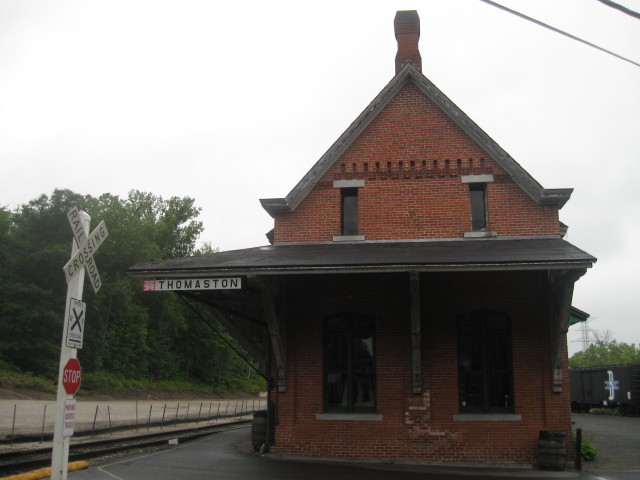
Thomaston, CT. 1881.
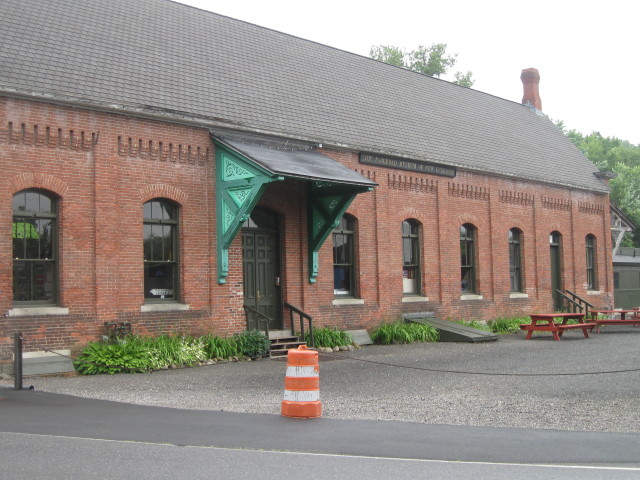
The Railroad Museum of New England.
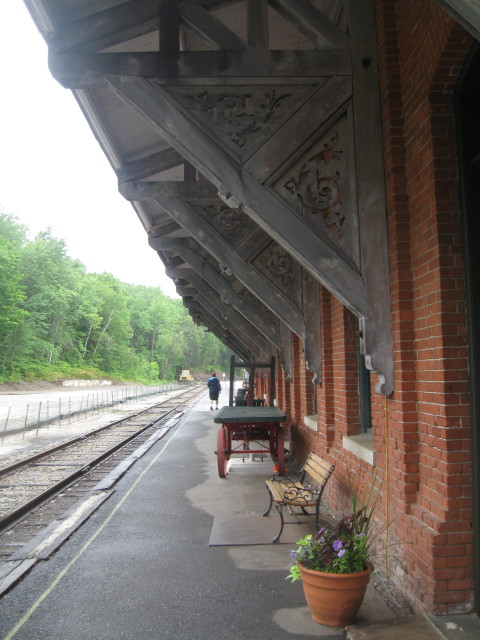
Active tracks.
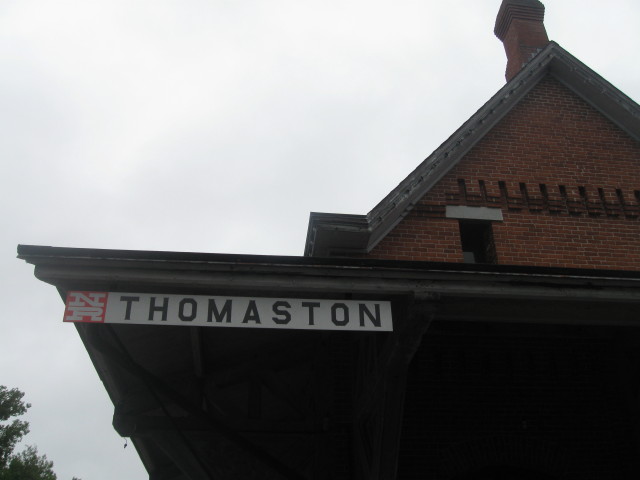
Naugatuck Railroad.
Your scenic hour and 15
minute train ride on the Naugatuck Railroad begins at
historic 1881 Thomaston Station. Board the vintage 1920s
coaches and prepare to see a side of the Naugatuck Valley
that you just can't get from your car. The 20-mile round
trip ride along the Naugatuck River hugs the river's edge,
passing through state forest lands and alongside old,
industrial brass mills of Waterbury and Thomaston. End your
journey with a view of the river valley below the Thomaston
Dam from a vantage point high above the spillway
Click
for Naugatuck Railroad. Click Back button on your browser
to return to this page.
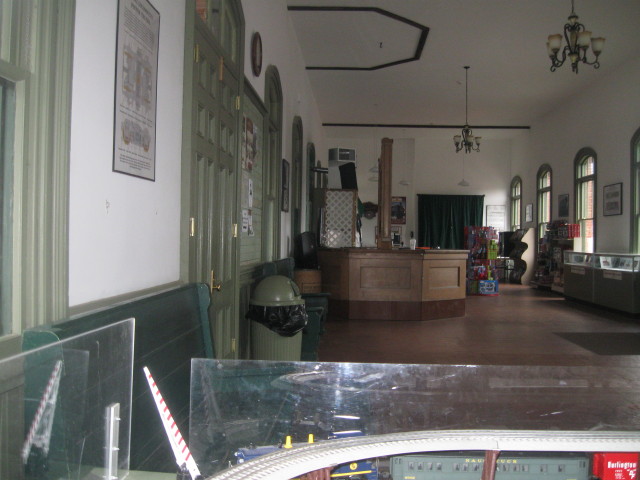
The museum was closed when we arrived and would be an hour or
so before they would be open. We just looked around and took
photos of equipment on display.
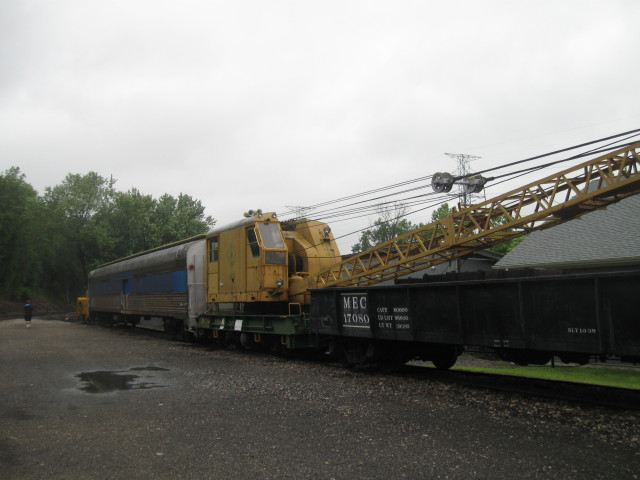
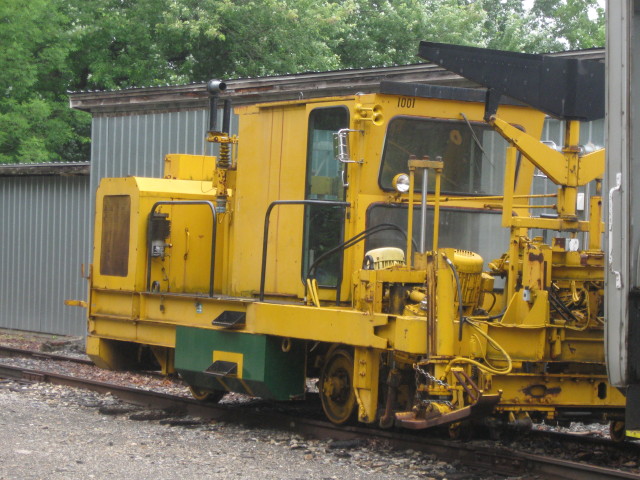
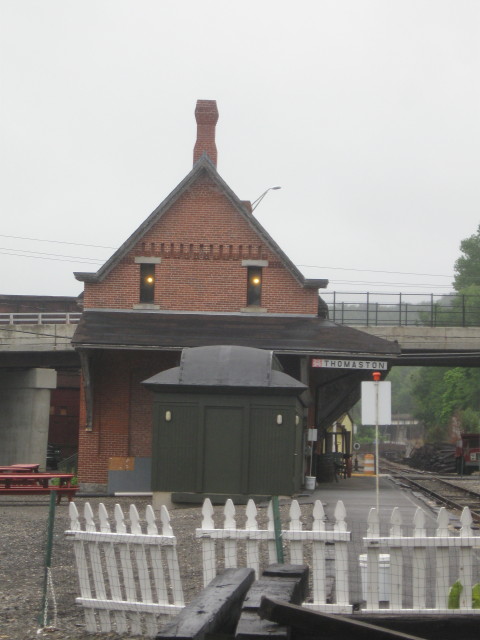
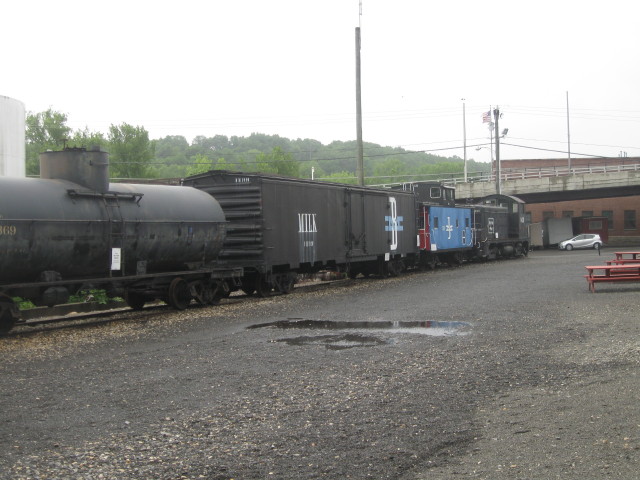

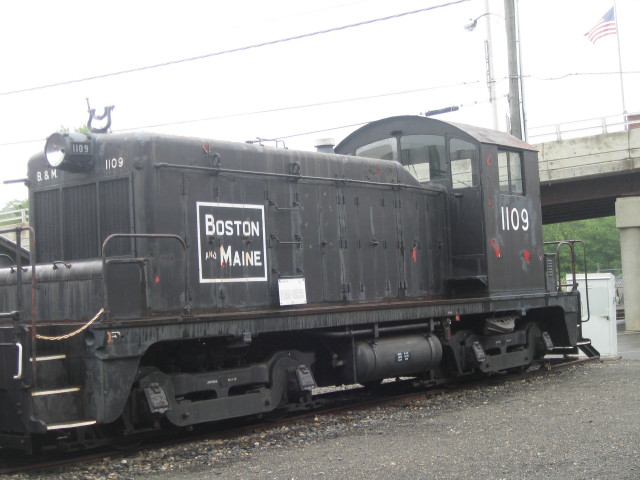
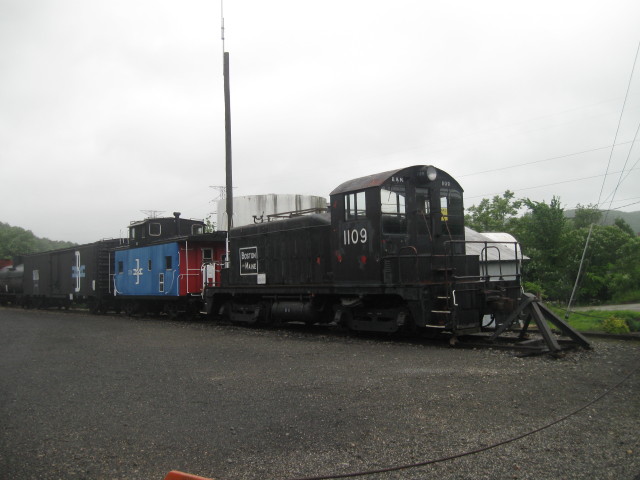 Click for information on The
Railroad Museum of New England. Click Back button on your
browser to return to this page.
Click for information on The
Railroad Museum of New England. Click Back button on your
browser to return to this page.
Leaving Thomaston, we
followed U.S. 6, east to I-91 and then north traveling
through the capital city of Hartford. Another capital city
traveled thru on this trip to New England.
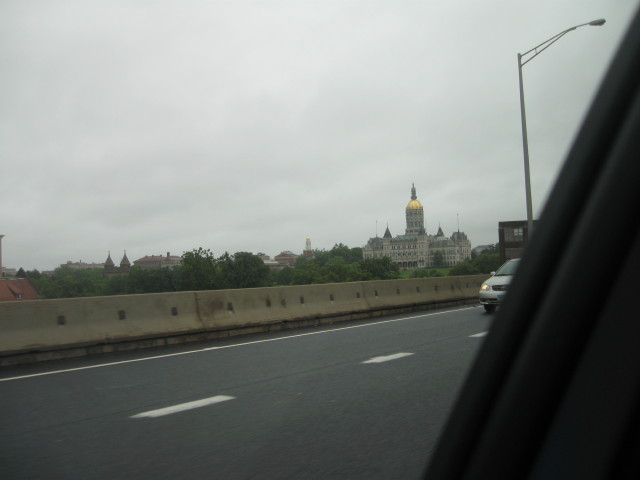
Connecticut State Capital, Hartford.
Continuing north on I-91
we exit at # 45 and then go east on Rt. 140 to East Windsor
and the Connecticut Trolley Museum.
Connecticut Trolley Museum
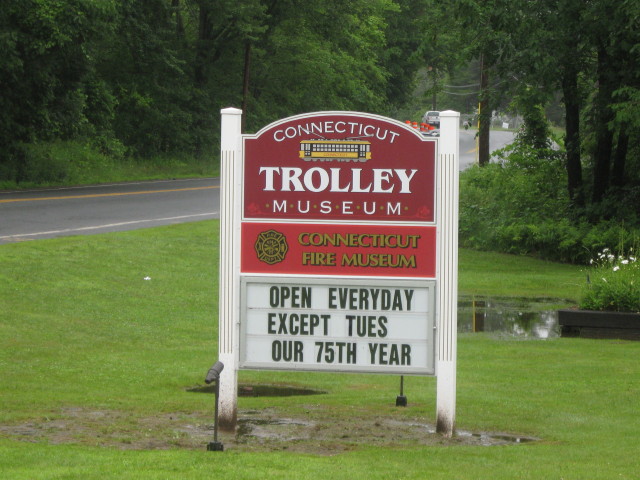
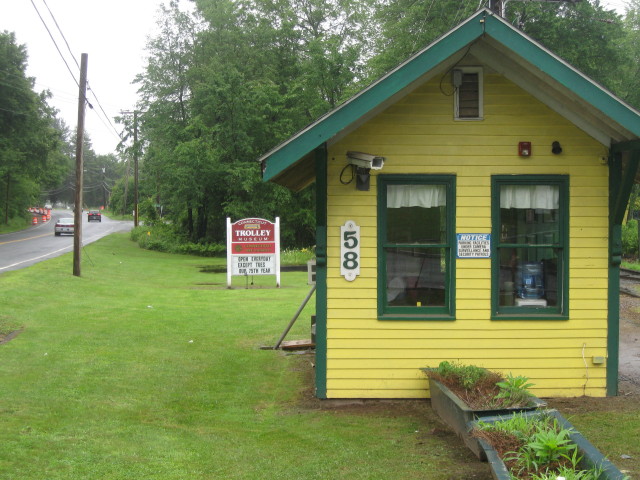
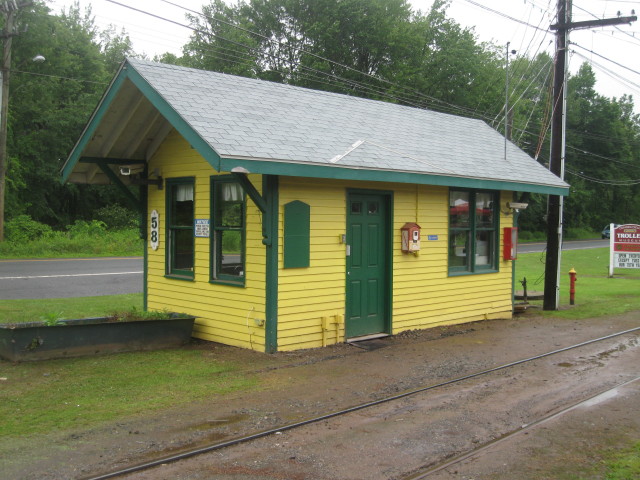
North Road Station; Dispatch building - trolley boarding area.
The sky today continued
to be dark and misty. After arriving we took a look around
before we headed into the visitors center for tickets and
times for the trolley rides.
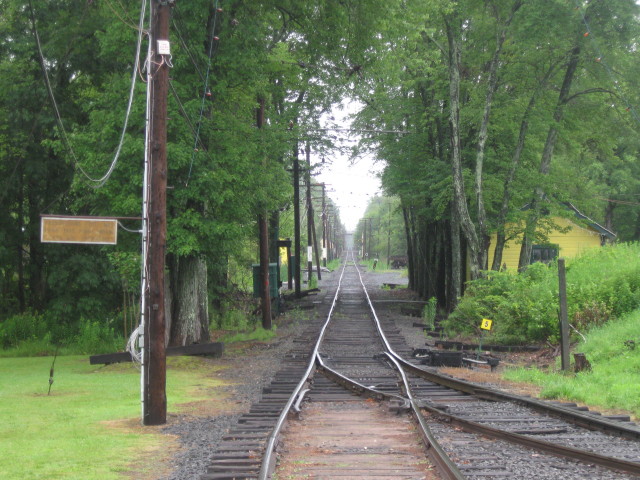
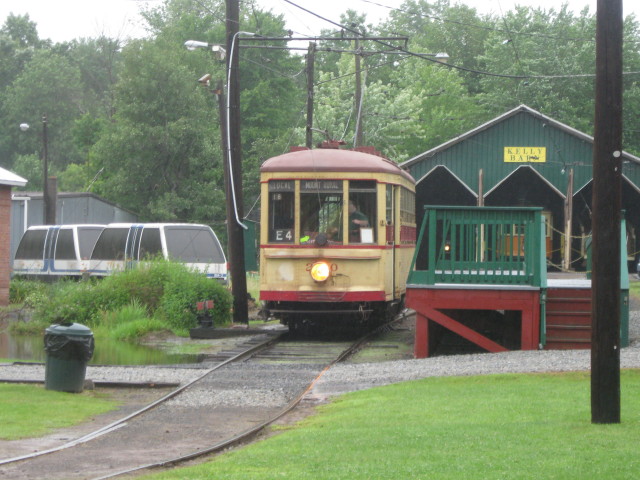
Car 2600.
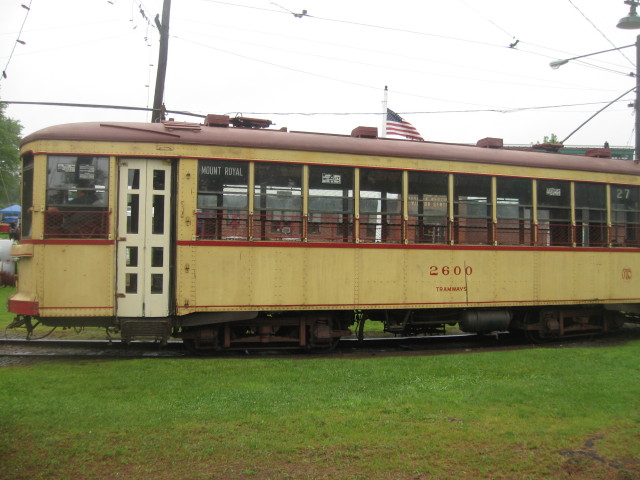
Closed Trolley Car 2600.
Manufactured in 1929 by the Canadian Car & Foundry Co. for
Montreal Tramways, these double ended cars were primarily
intended for the Canadian, Bordeaux and Montreal Lines. Her
last run on Canadian tracks was August 30, 1959. She was
purchased later the same year for the CTM.
Length: 41' - Weight: 18.5 tons - Seating:
32+2
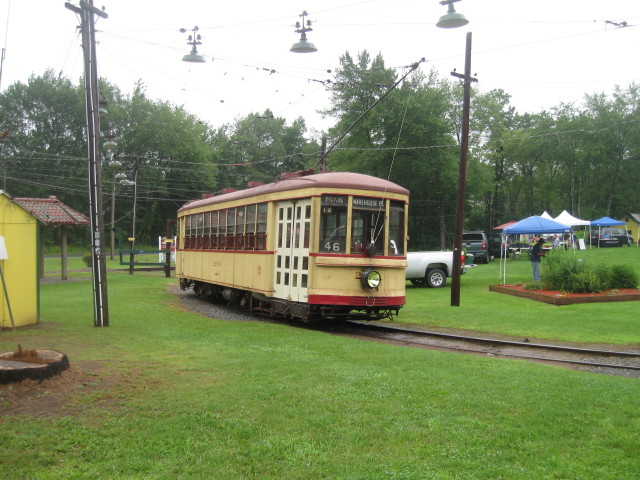
Rear end of car 2600.
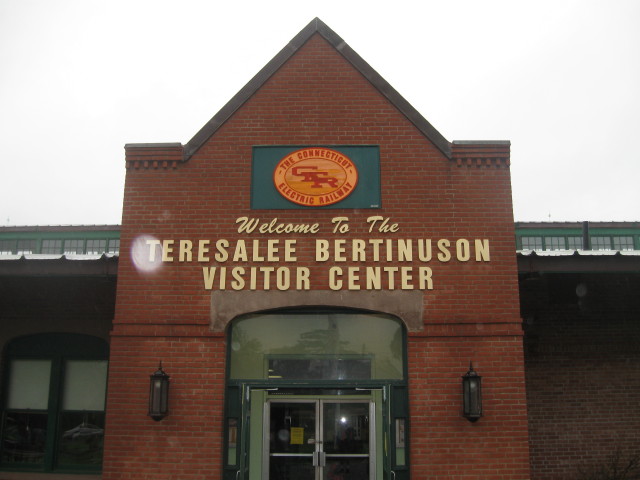
After receiving our
tickets we boarded car 2600 for our first ride.
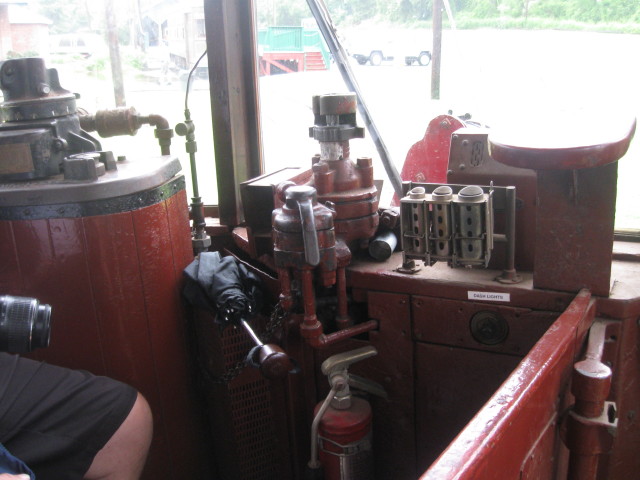
Control stand on car 2600.
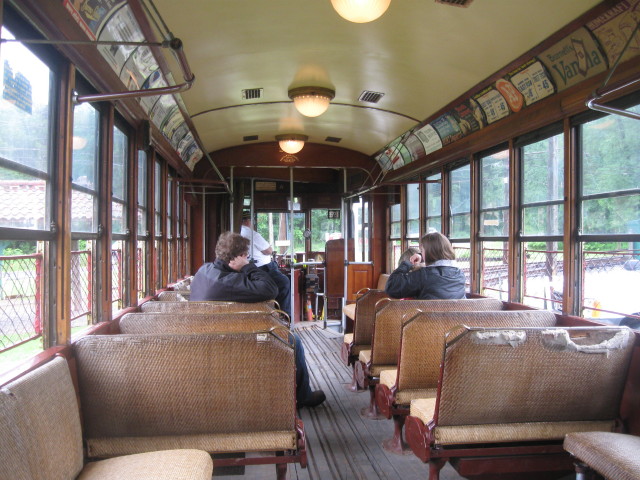
Inside car 2600.
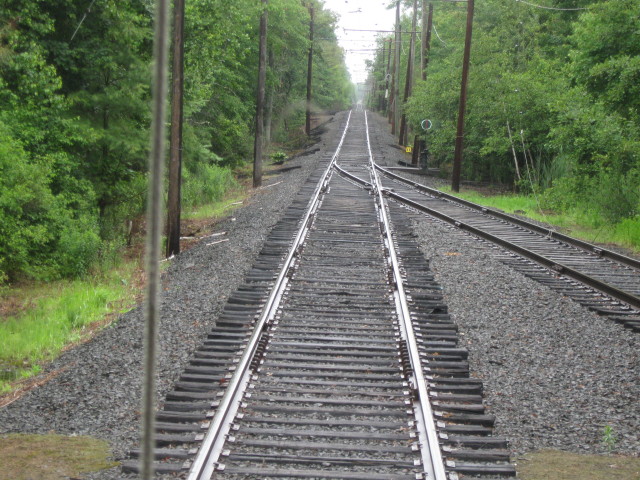
Your three-mile round trip ride will take you through the
beautiful New England countryside.
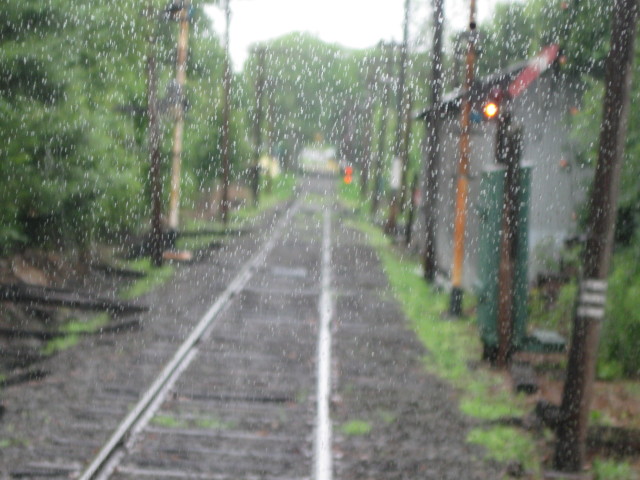
This is a carry your umbrella day.
After finishing our ride,
Chris and I headed indoor to the dry museum. They have many
pieces in their historic collection of trolley and
railroading history.
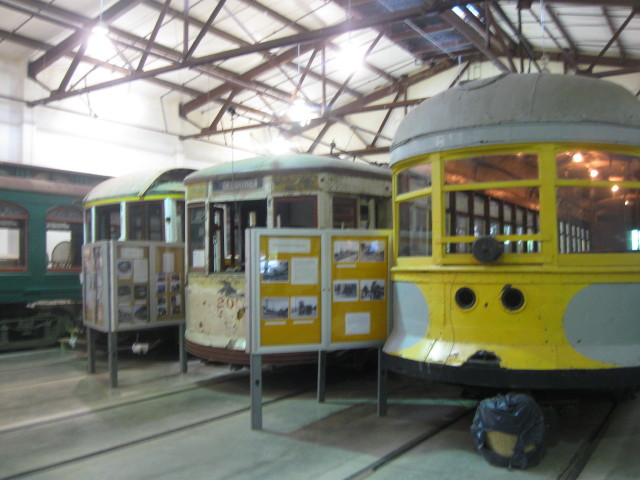
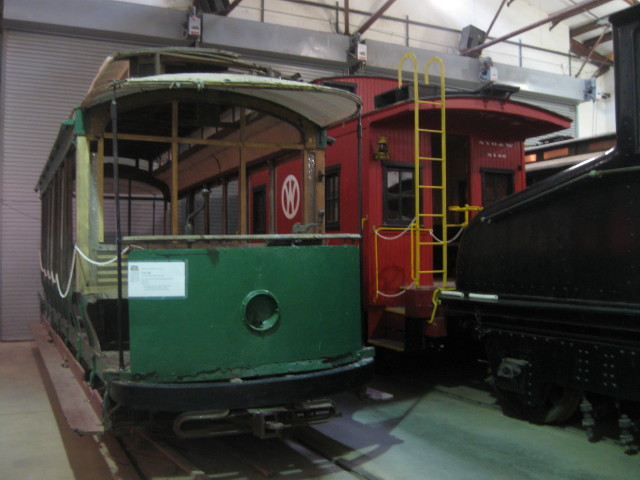
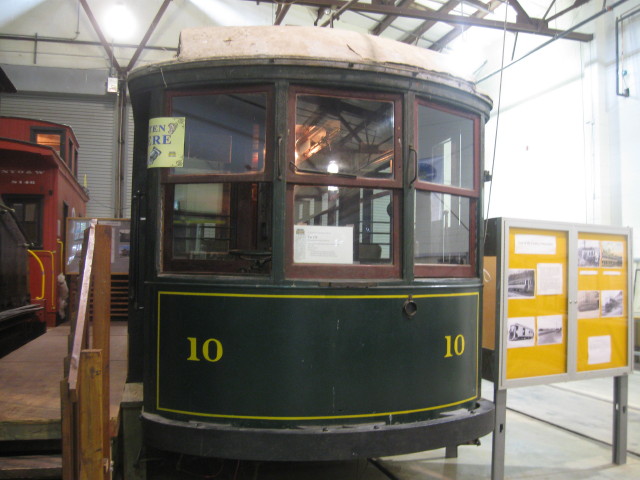
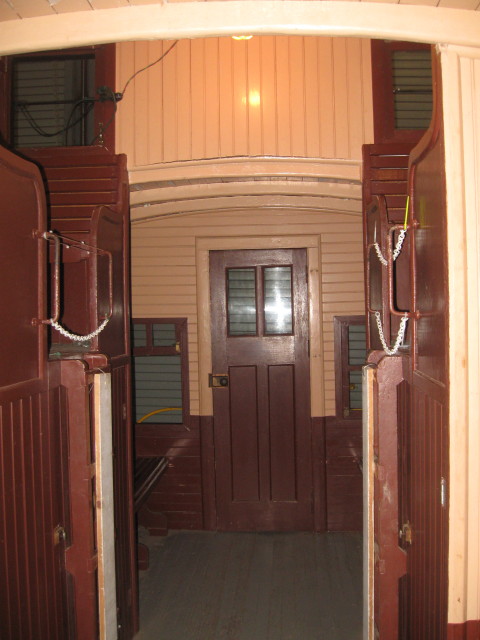
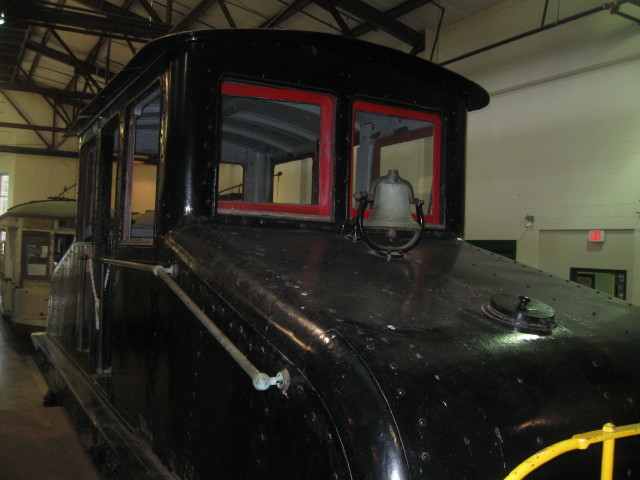
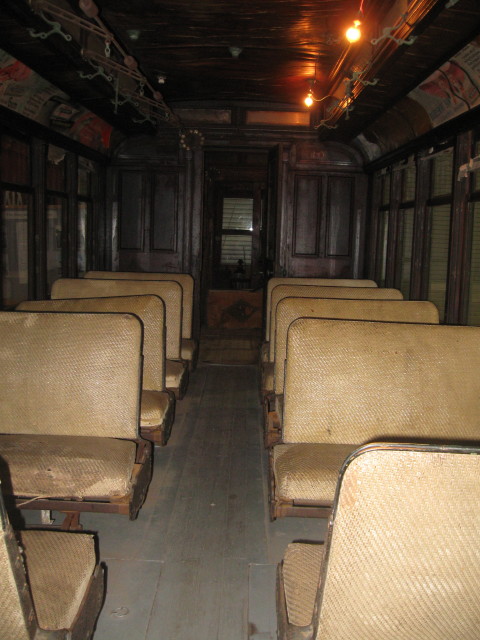
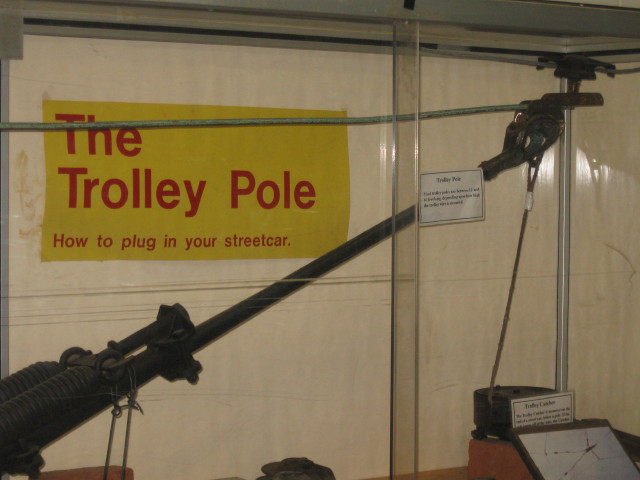
After covering everything
in the dry inside we went outside for another trolley ride.
We'll be riding car 836.
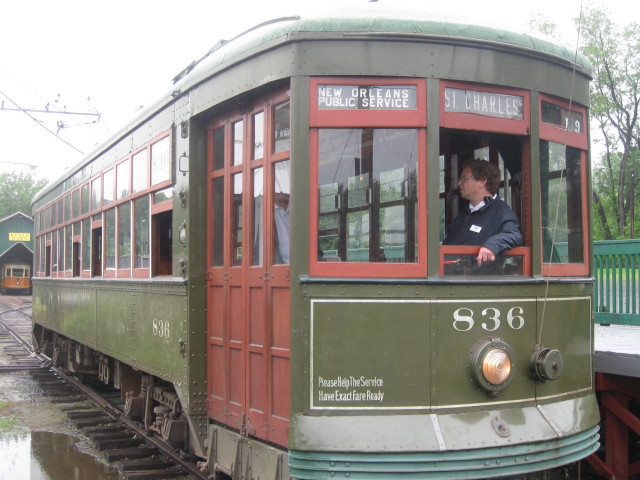
Closed Trolley Car 836.
Built in 1922 by Perley Thomas of North Carolina, she plied
the streets of New Orleans until May 29,1964 arriving here on
July 22, 1964. It is an acknowledged fact that 836 was the
camera-platform-car used in the 1951 filming of the original
"Streetcar Named Desire" with Marlon Brando.
Length 47' - Weight 21 tons - Seating 52.
Are there any trolley
cars left in New Orleans? Well I'll find out next weekend
when I will be in New Orleans and ride their cars.
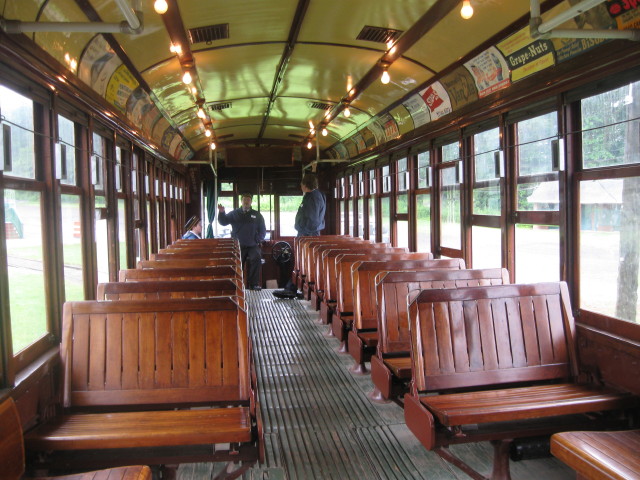
Inside car 836.
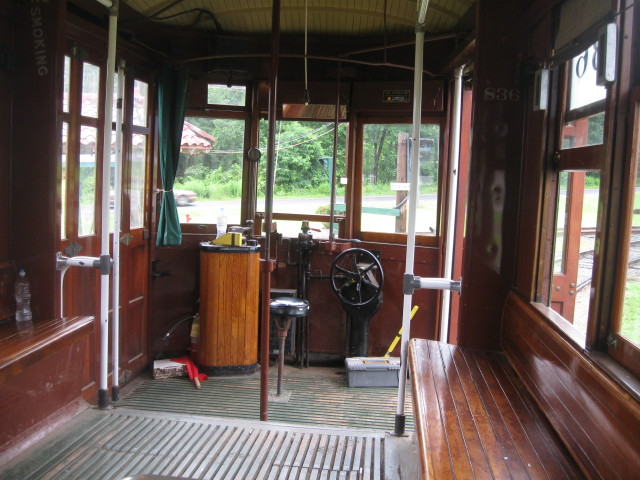
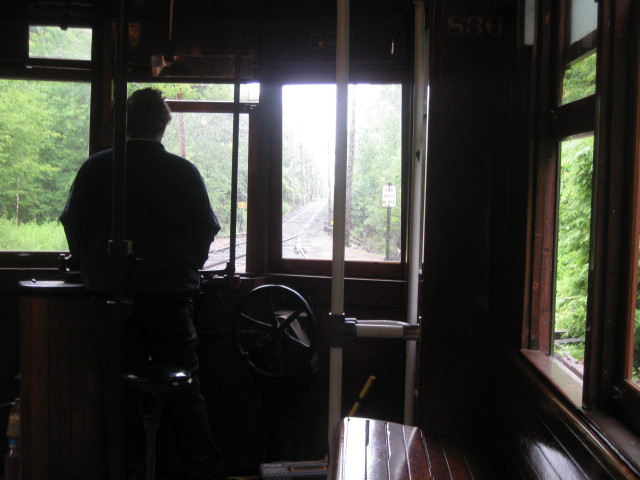
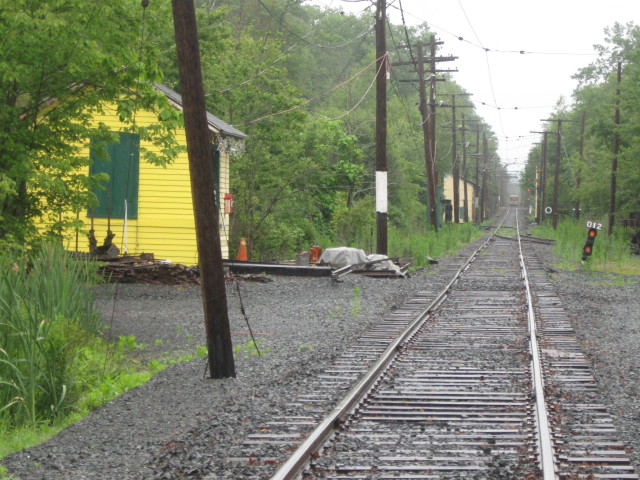
After finishing this ride
we headed to behind the Visitor Center for the Kelly Car
Barn, primary storage area for operational trolleys.
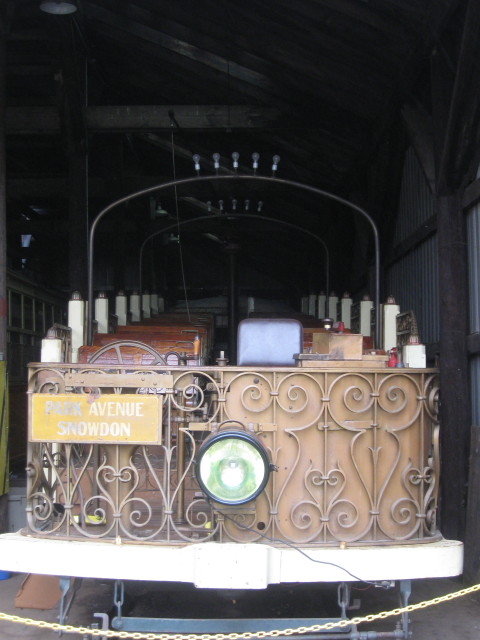
Open Observation Car 4.
The car was built in 1924 by Montreal Tramways in their
Youville Shops.In the '40s this car was used on a Montreal
route known as; "Pare Lafontaine - Cote-des-Neiges." Arriving
here in 1964, she is one of the most popular rides, winter or
summer, and is known to her fans as the "Electric Sleigh."
Length: 47' - Weight: 22 tons - Seating; 50
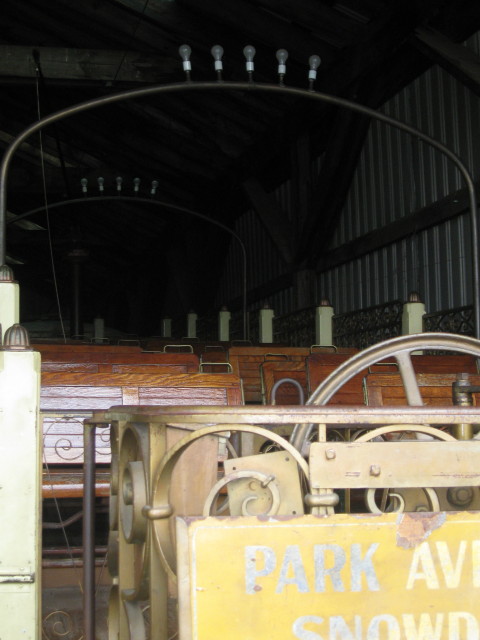
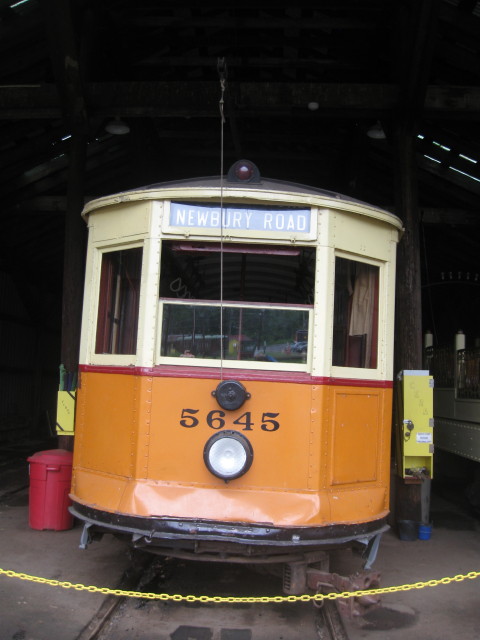
In 1923 the Laconia Car Co. built this car for the B.E.R.
(Boston Elevated Railway). This type 5A semi-convertible
vehicle served Clarendon Hill, MA beginning Mrch1924
eventually being assigned to the Watertown Car House. Her last
public run was April 1959 and was purchased later that same
year by the CTM.
Length: 45' - Weight: 15.5 tons -
Seating: 48
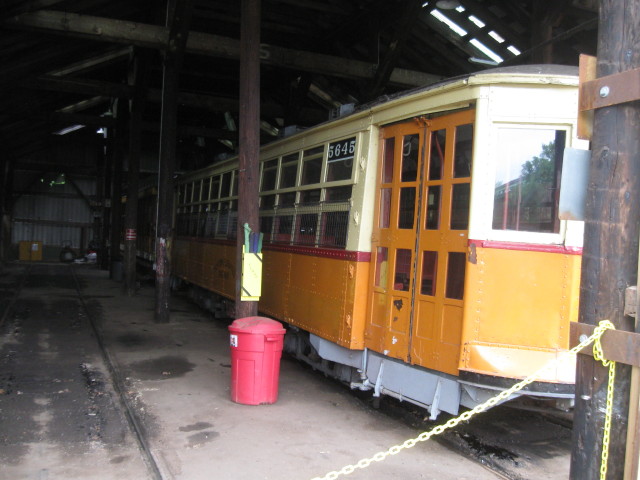
Next door to the Kelly
Car Barn is the Fire Museum.
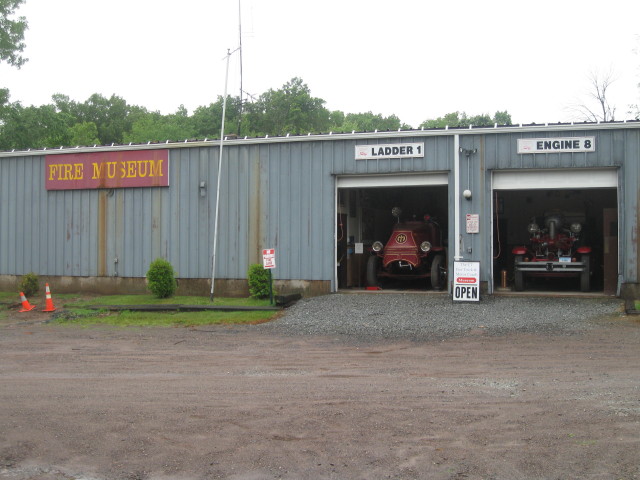
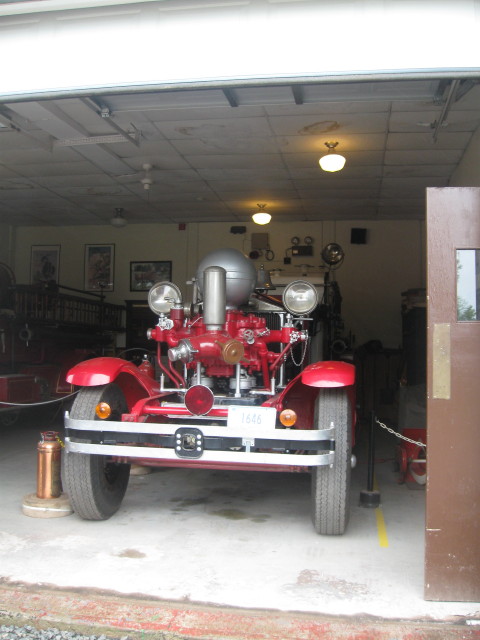
Engine 8.
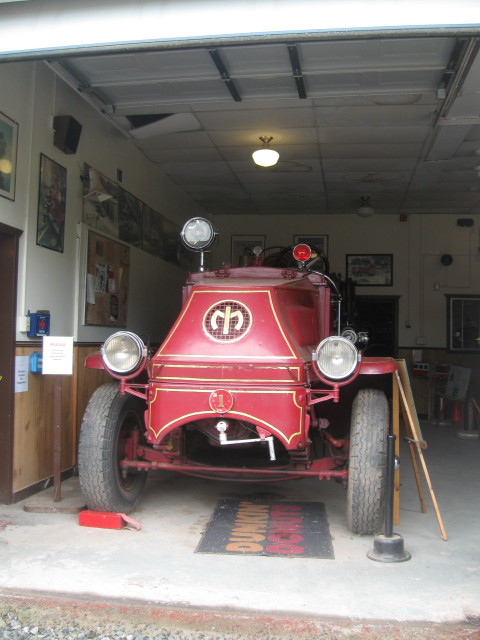
Ladder 1.
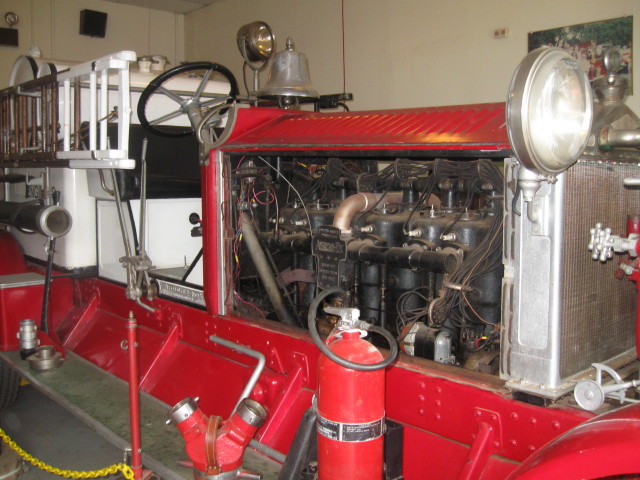
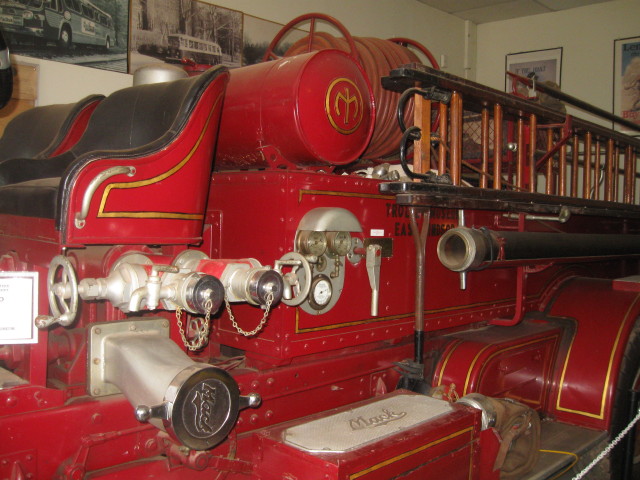
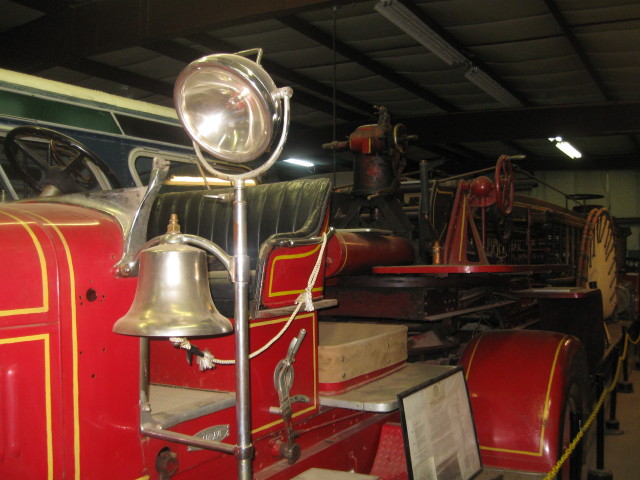
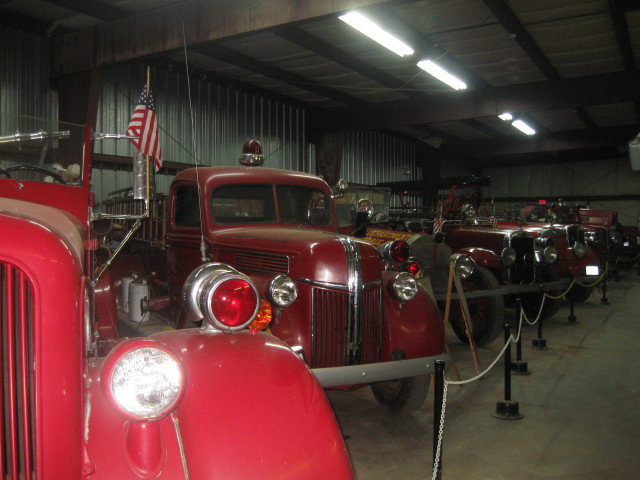
Leaving the Fire Museum
we now wanted to see the rest of the grounds and equipment.
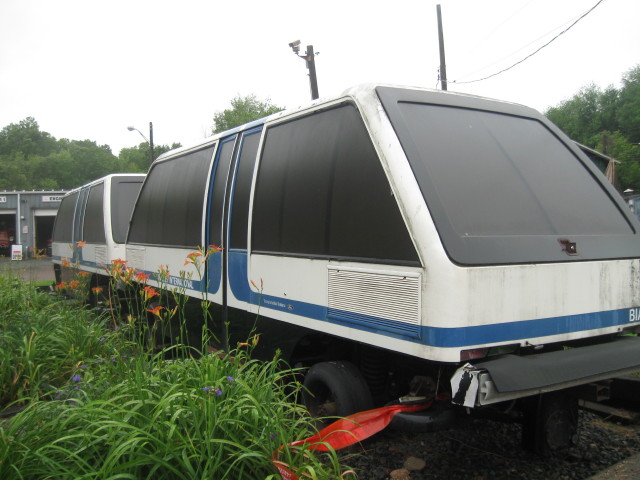
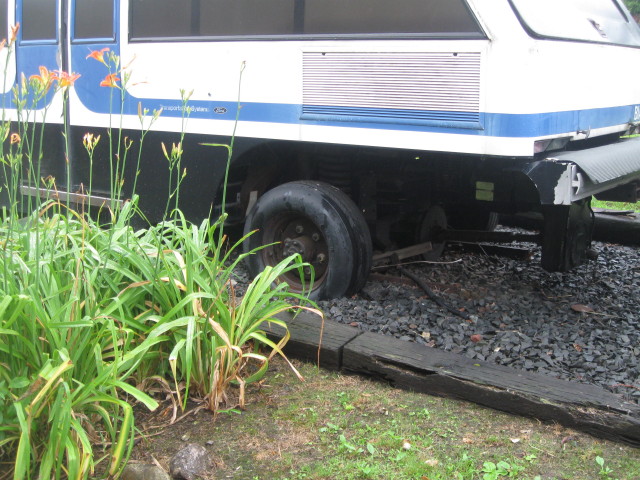
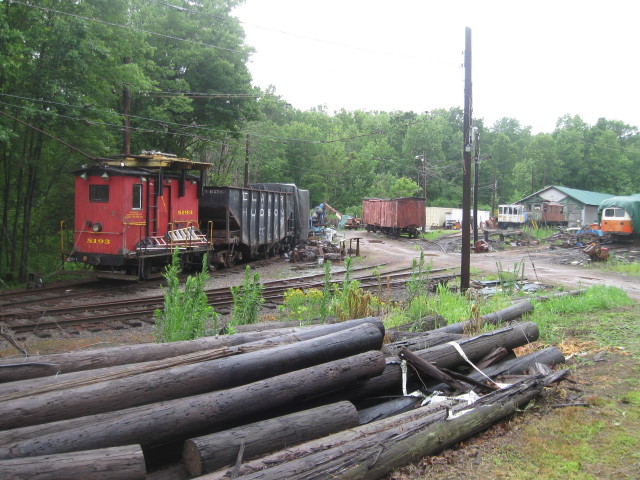
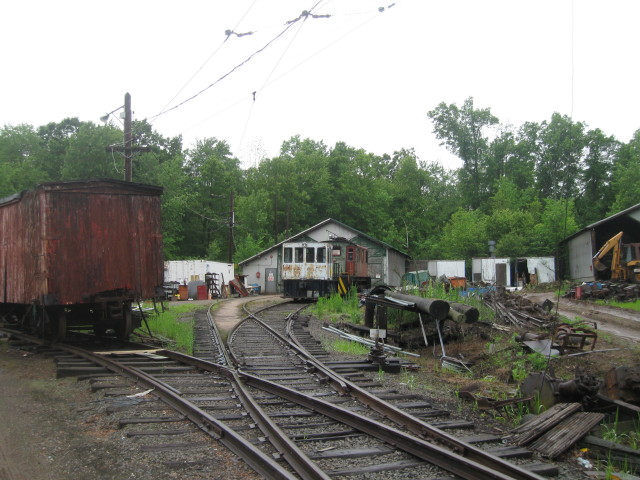
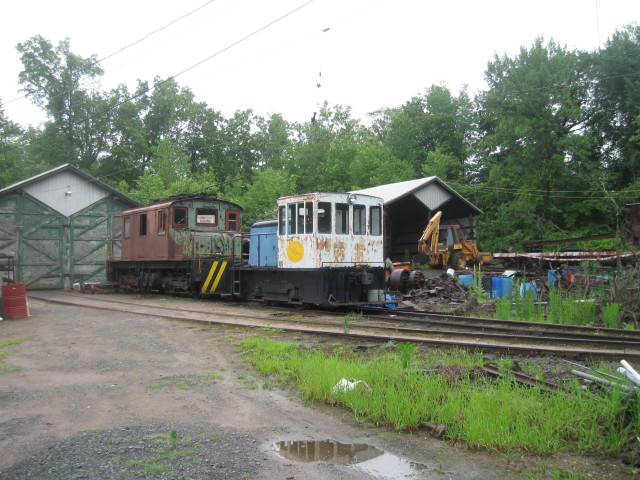
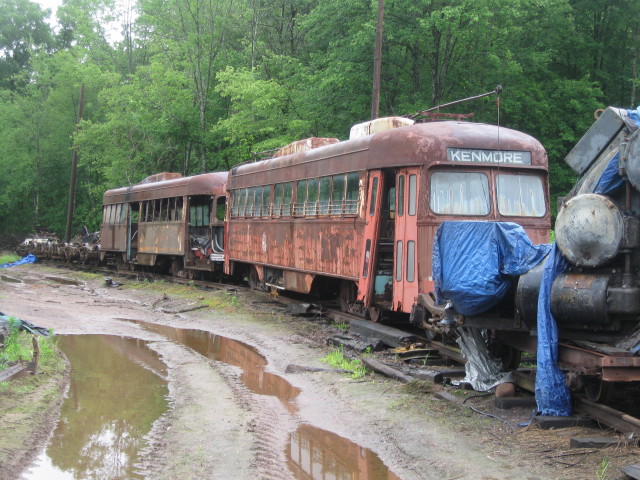
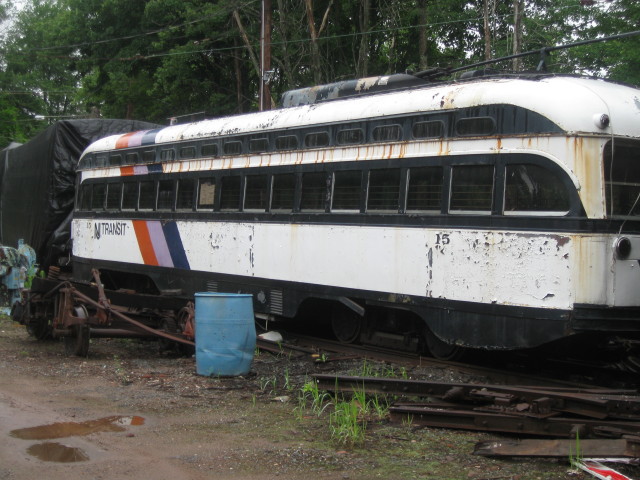
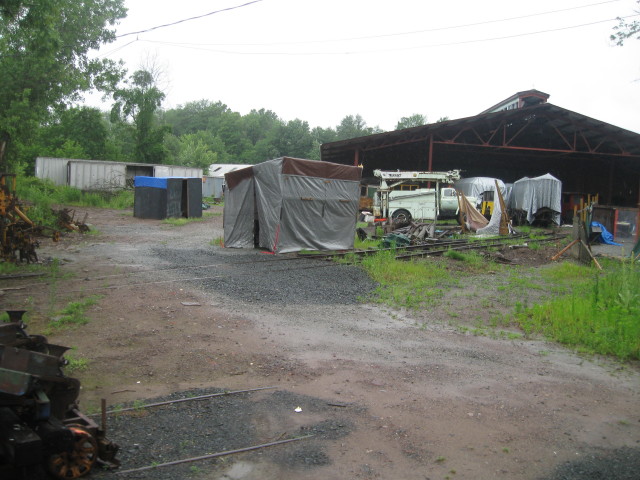
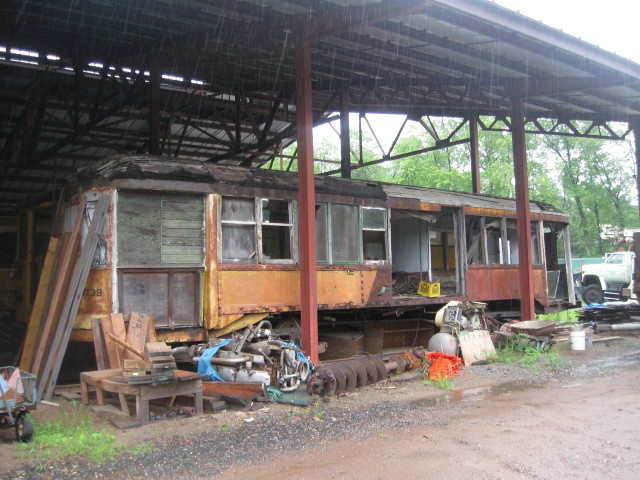
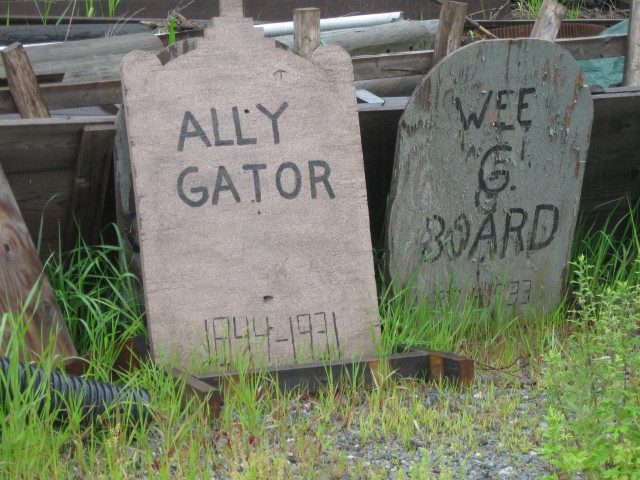
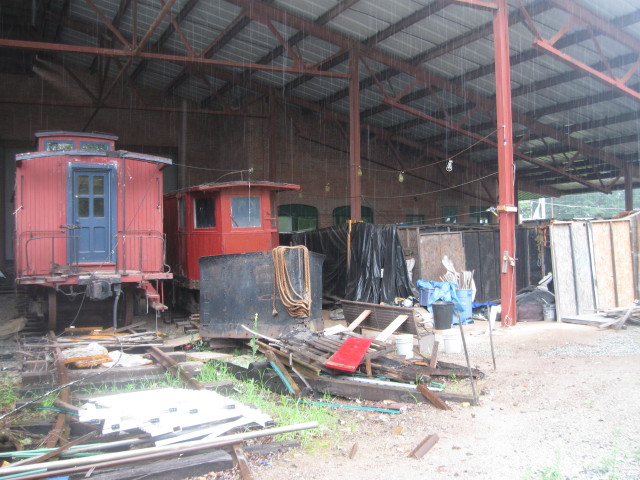
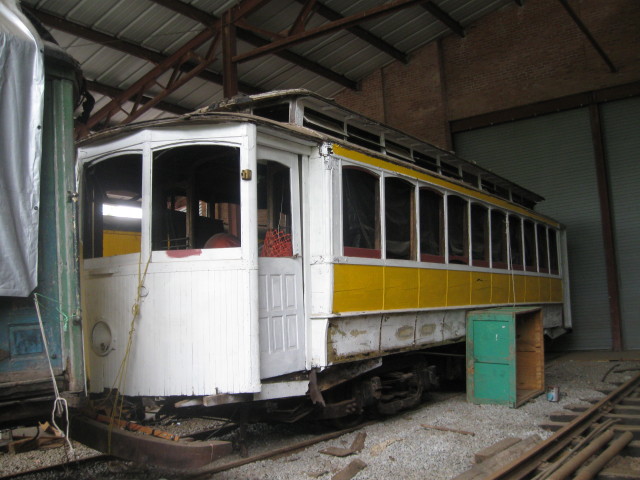
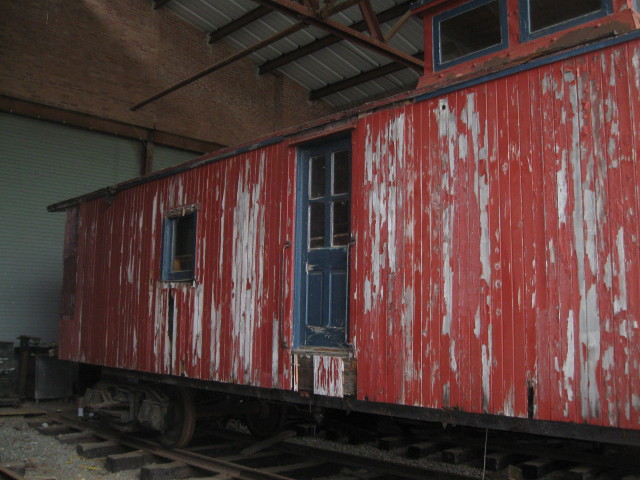
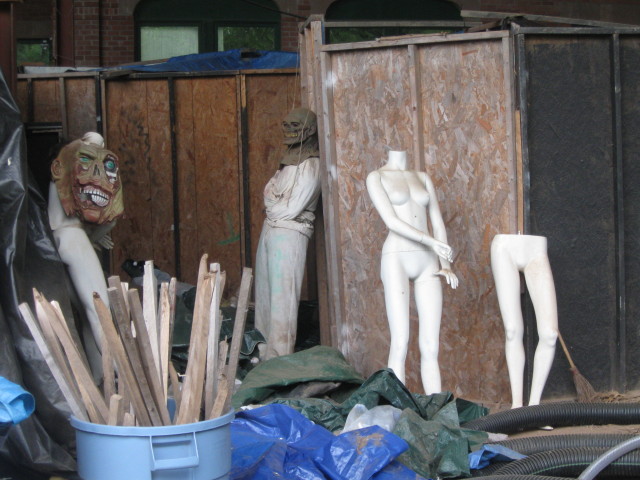
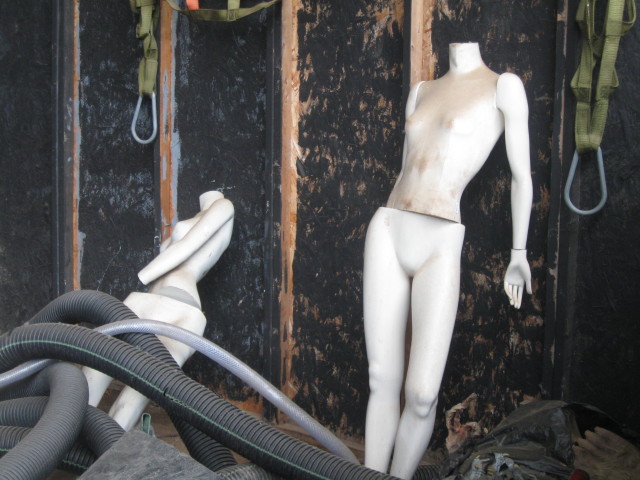
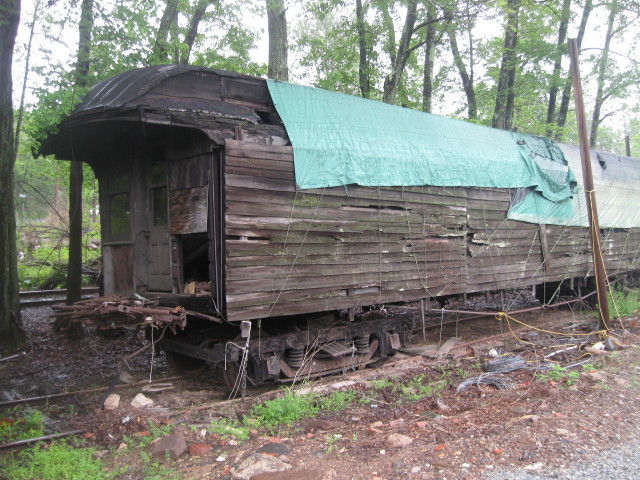
Definitely constructed of wood.
Springfield, MA
Leaving the museum we
rejoined I-91 north bound for Springfield, MA. Our plan for
Springfield was for Chris to board Amtrak's Vermonter train
#54. He needed this Springfield to Brattleboro leg to help
complete his goal of riding all of Amtrak trackage. #54
scheduled departure is 3:15pm and arrival in Brattleboro at
4:56pm. I was to drive from Springfield north on I-91 to
Brattleboro, VT and meet the Vermonter upon its arrival.
While in the Springfield
station, I purchased my tickets for tomorrow's
train trips: Albany to Penn Station and Penn Station to
Norfolk, VA. Later, while checking my tickets I noticed that
the Guest Rewards number was missing. I showed this to Chris
and he called an agent at the Sana Ana station and they were
able to fix this so I would get credit for this travel.
Lesson: always check your ticket before leaving the
window. I knew that I gave the agent my rewards card but for
some reason the number was not entered.
Leaving Springfield the skies were
still dark and wet but the drive easy with light traffic.
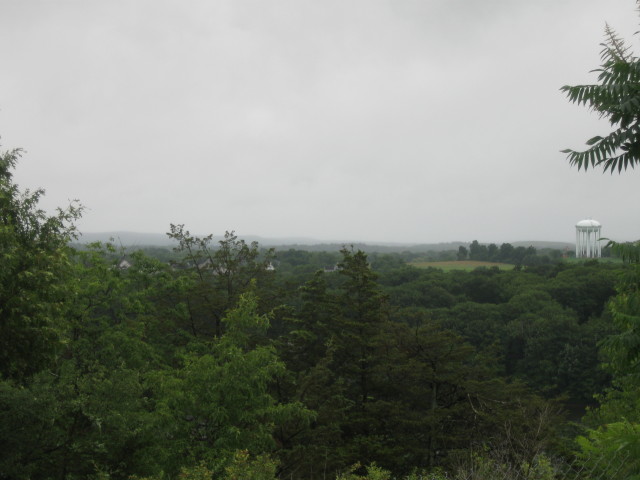
Some where near the Connecticut-Massachusetts border.
Brattleboro, VT

Amtrak's chic and alfresco waiting area at their Brattleboro
station.
After completing my main
task - finding the Amtrak station - next was to find a
parking space. There was a good parking area on the other
side of the tracks so you could wait and watch for arriving
trains. I still had about 45 minutes until Chris' train
arrived and next to the parking lot was an old friend, the
Connecticut River. So I decided to walk over and explore
with the free time.
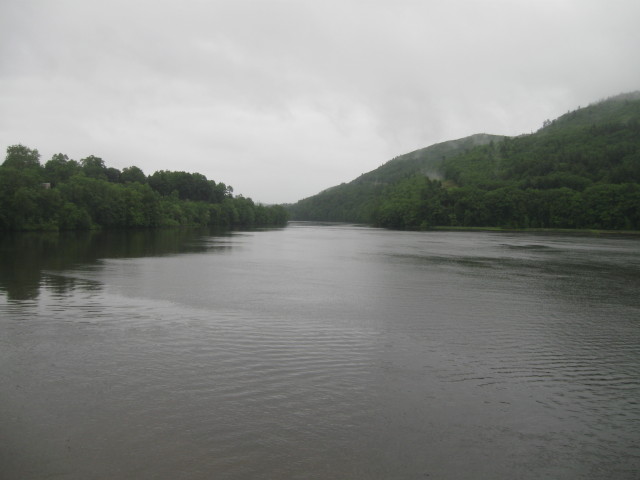
Connecticut River with Vermont on left and New Hampshire on
right.
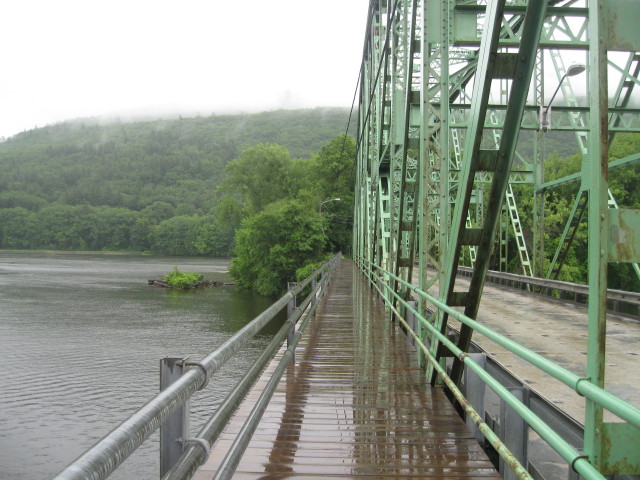
On the bridge looking toward New Hampshire.
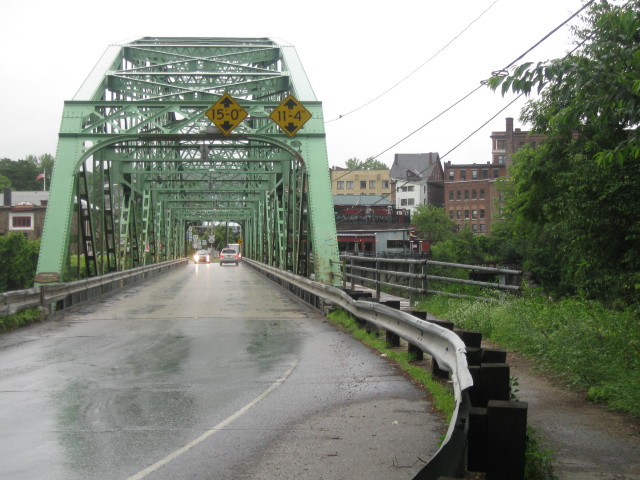
.
After crossing the river and looking toward Brattleboro.
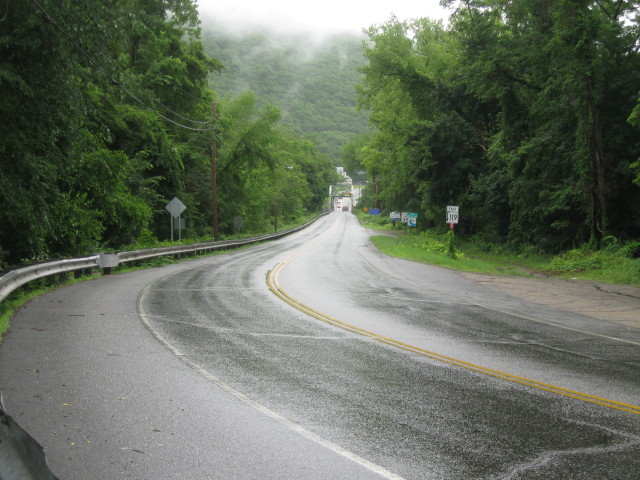
Standing on Rt 119 looking toward the bridge.
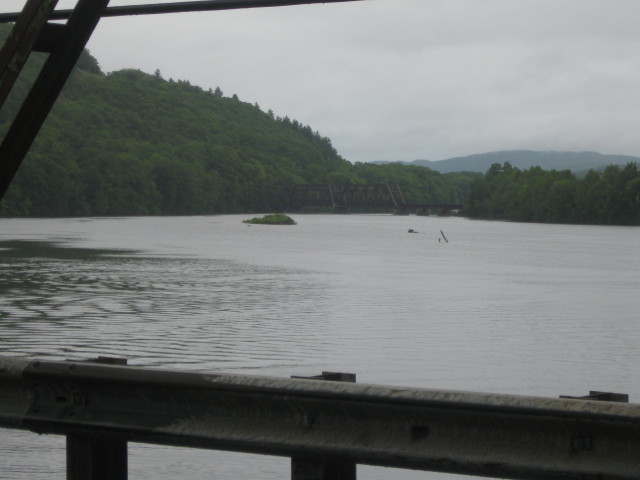
Looking down river. There is a RR bridge hiding in the
background.
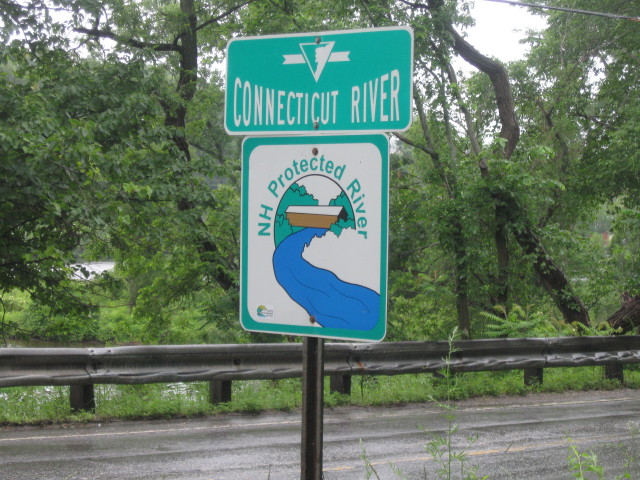
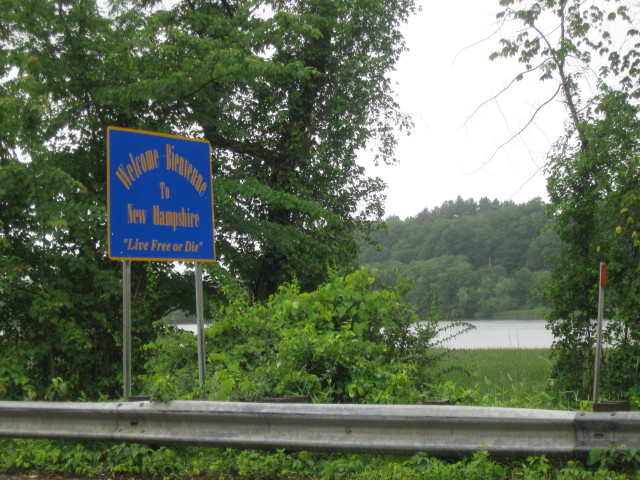
Welcome - Bienvenue to New Hampshire "
Live Free
or Die"
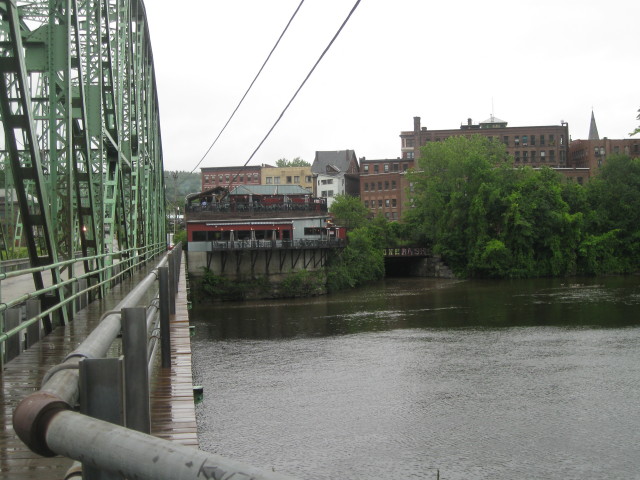
Walking back to Brattleboro.
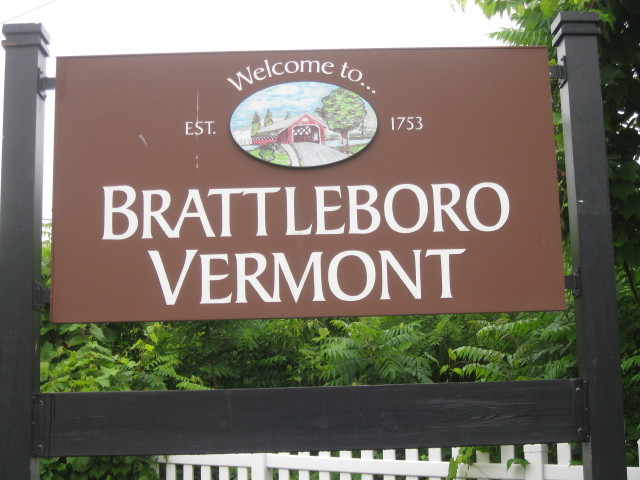
It was here that the state's first permanent English
settlement, Fort Dummer, was established in 1724.
Rudyard Kipling, in collaboration with New York architect
Henry Rutgers Marshall, built a house for his American
bride north of Brattleboro in Dummerston and named it
Naulakha, which means "precious jewel." Kipling wrote
"Captains Courageous" and the two "Jungle Book" stories
during his residence there.
Walking up a few
yards from the river bank and the bridge on the
inclining sidewalk, I arrived at a busy crossroad
where I stopped to look around at the exciting scenery.
Just a few more yards till you reach the Connecticut
River.
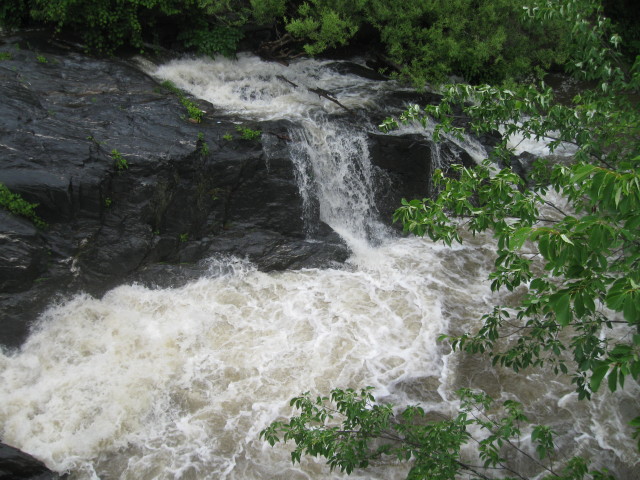
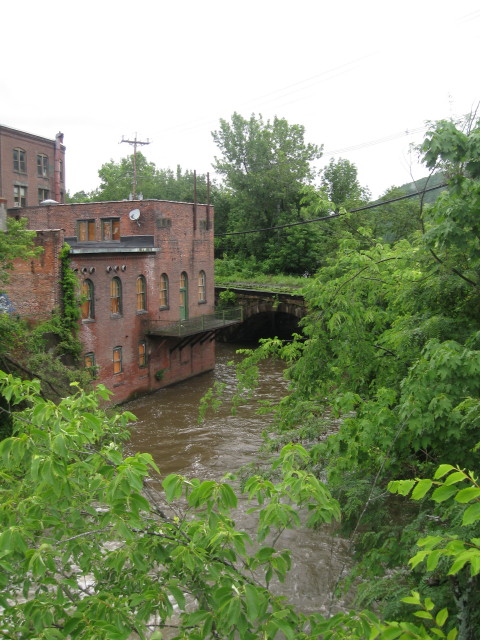
Looking toward the river.
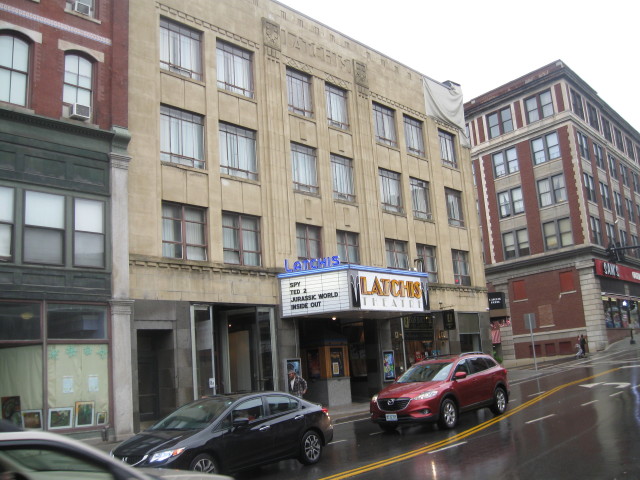
A downtown theater.
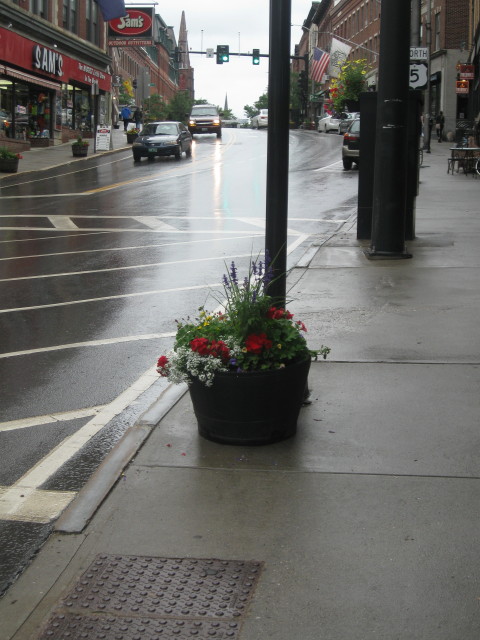
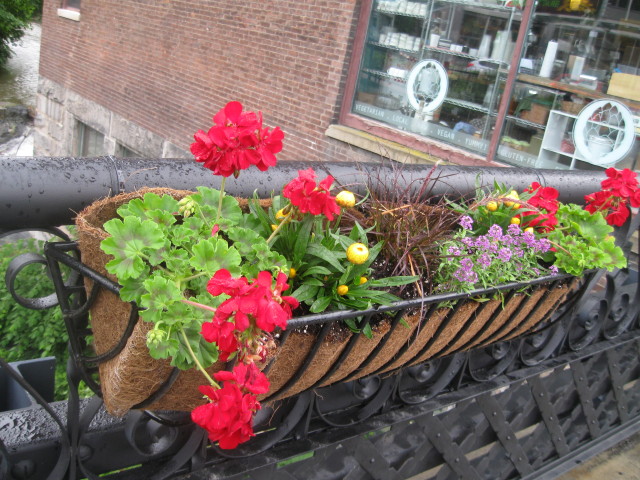
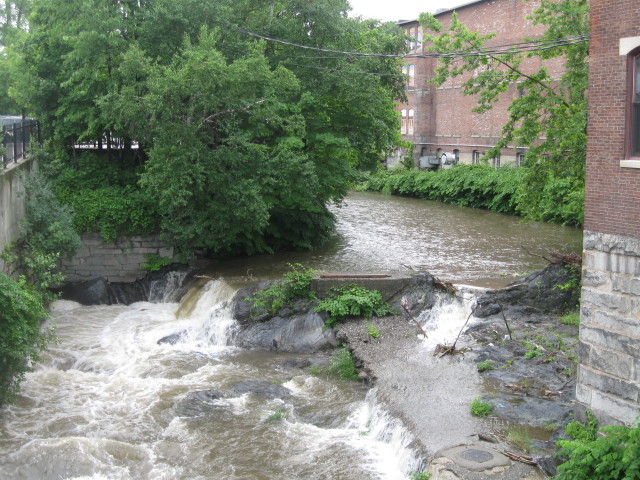
Stream runs in town next to highway
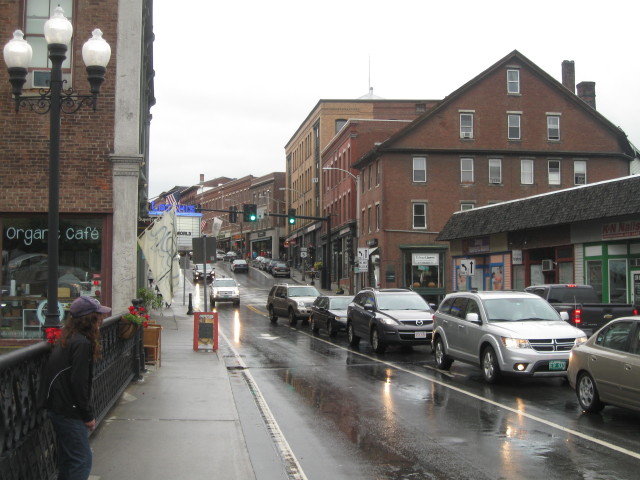
Bridge over the stream.
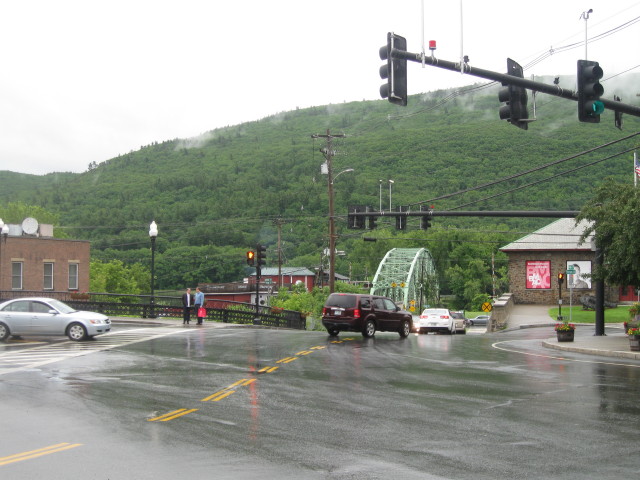
Looking to the hills of New Hampshire.
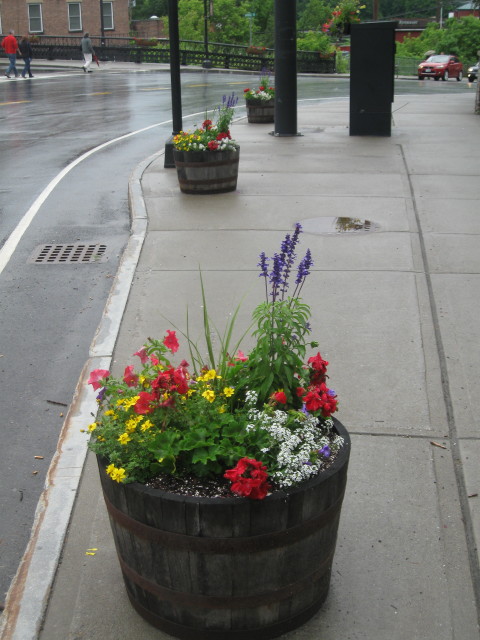
The flowers are a nice touch for sure.
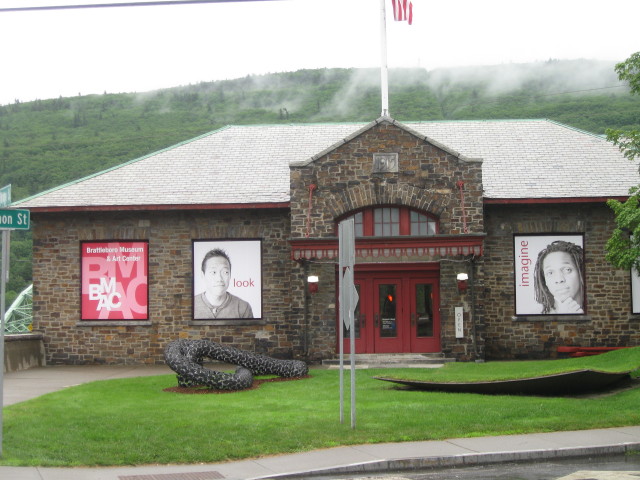
Brattleboro Museum & Art Center is the former Union
Station.
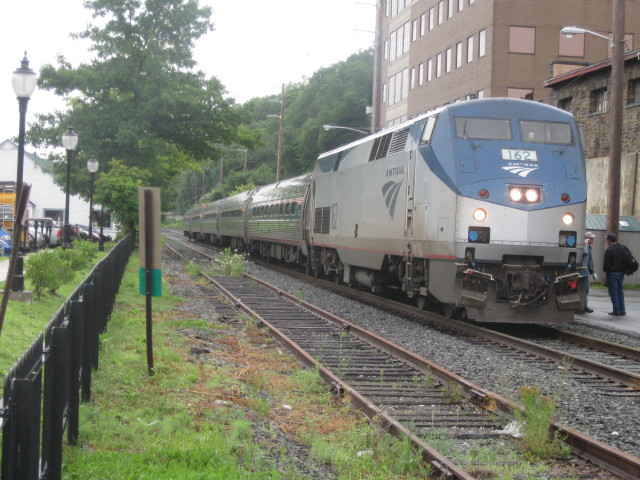
Amtrak's Vermonter # 54 at the Brattleboro station with a
VIP passenger.
Chris' train arrived
on time. He said he had a good trip and was excited to
add a check on the list. From the station we drove back
to I-91 and then south back to MA. At exit 26 we leave
I-91 and take Rt 2 to the Shelburne Falls Trolley
Museum.
Shelburne Falls, MA
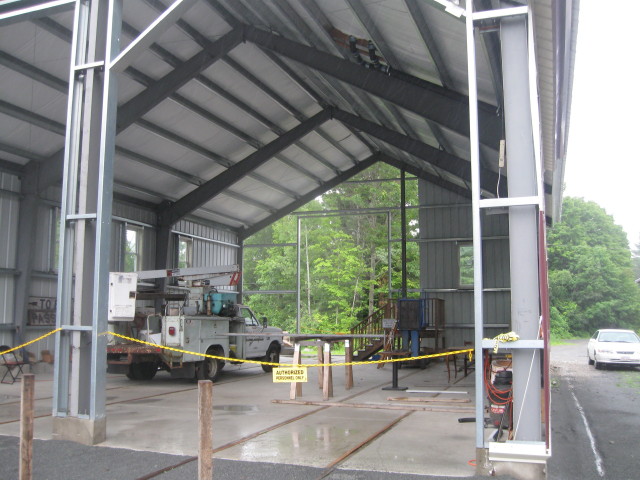
New Carbarn going up at the museum. Car 10's new
home.
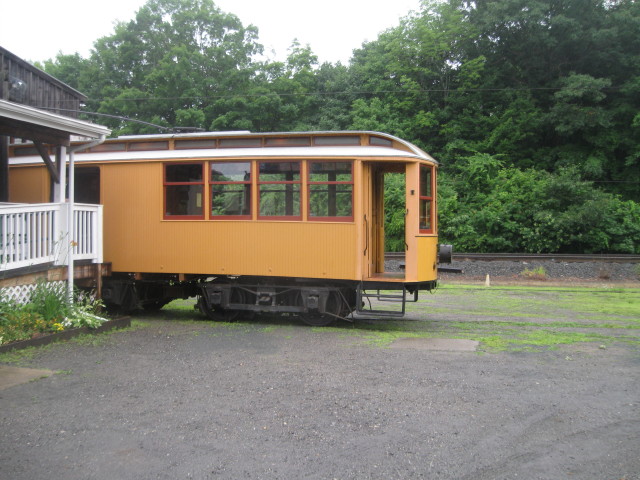
The star of the show #10.
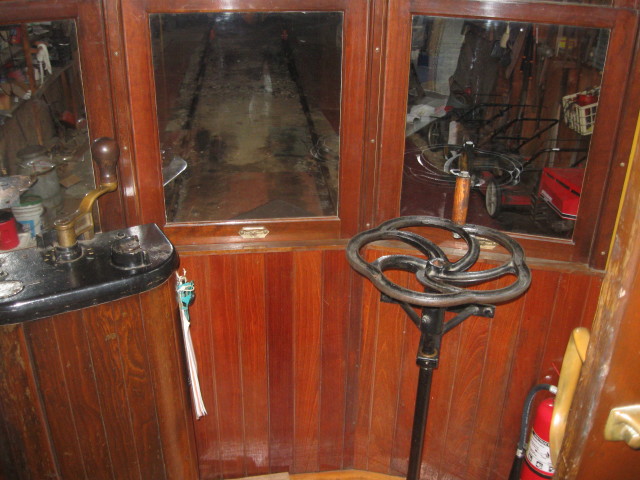
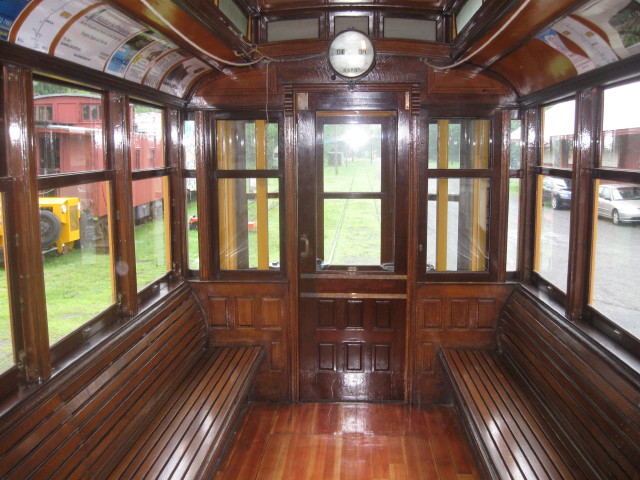
We were able to ride in this car.
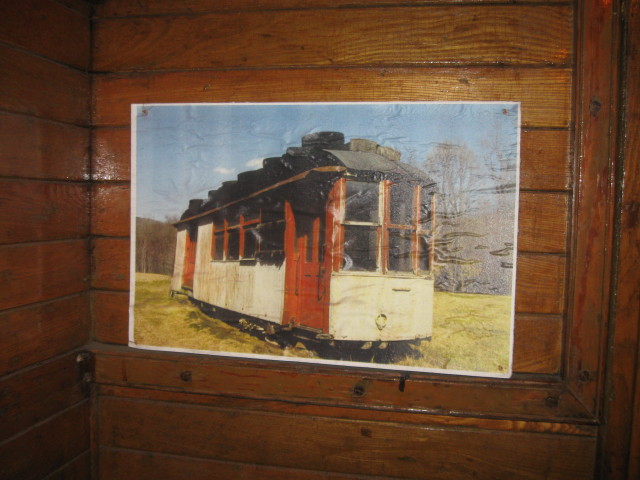
What #10 looked like when it was a chicken coop in the
farmers field.
The story was when the farmer was young he and his girl
friend would ride this when they were courting and he
saved it for sentimental reasons.
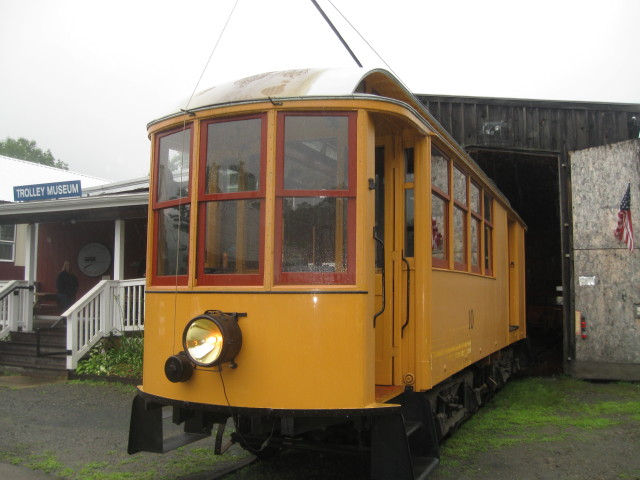
The Shelburne Falls Trolley Museum is dedicated to
preserving and operating Shelburne Falls & Colrain
Street Railway trolley car No. 10. This car was built
by Wason Manufacturing Co. in Springfield, MA in 1896.
It was delivered new to Shelburne Falls and has never
left the valley. For thirty years it served its
namesake towns. For twenty years it crossed the
Deerfield River on what is now the famous Bridge of
Flowers. Saved by a local farmer, it spent sixty-five
years as a chicken coop, tool shed and play house.
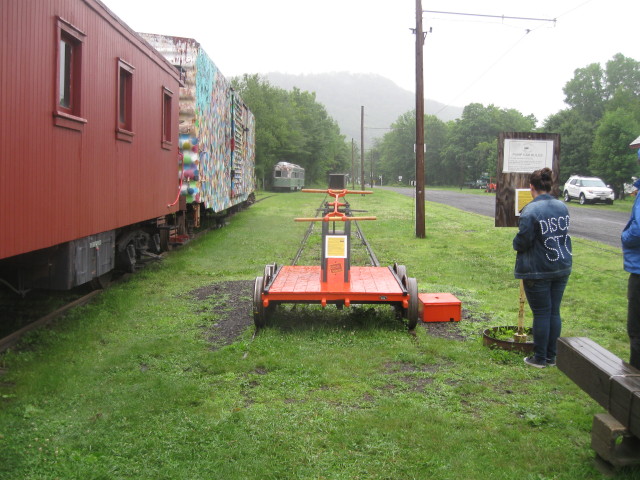
Waiting to ride the pump car - with storage shed at end of
track.
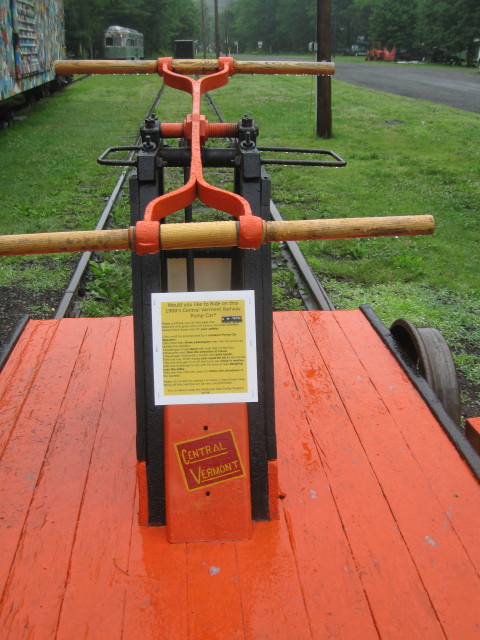
1900'sCentral Vermont Railway Pump Car.
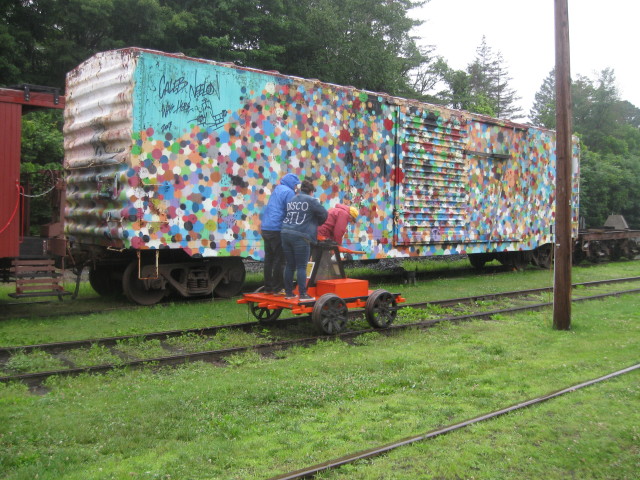
Museum visitors and docent moving pump car to its storage
shed.
Click for
Shelburne Falls Trolley Museum. Click the Back Button on
your browser button.
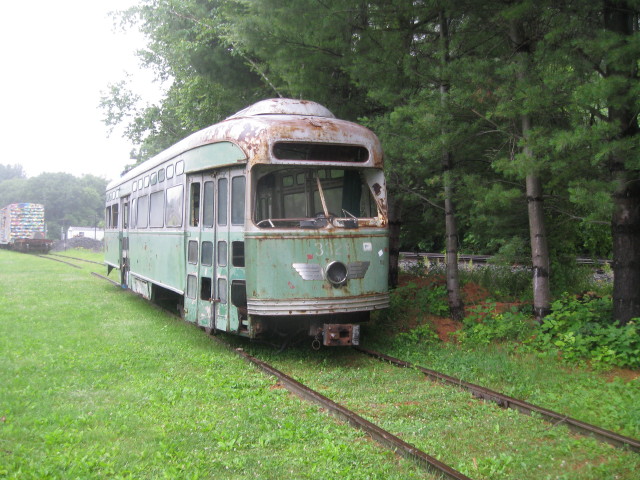
As we had arrived
after closing hour, the staff were very accommodating
and hospitable. We kept out visit short and as it was
getting dark, we left and went to see the Bridge of
Flowers and the potholes and falls on the Deerfield
River.
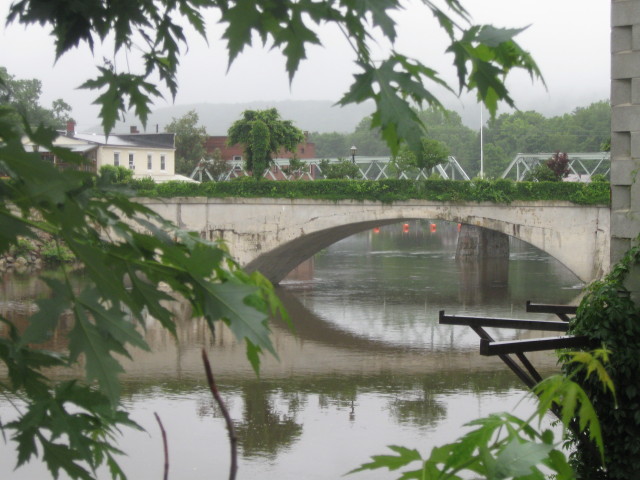
The Bridge of Flowers, built in 1908 to carry trolley cars
over the Deerfield River.
Click
for Bridge of Flowers. Click Back button on your browser
to return to this page.
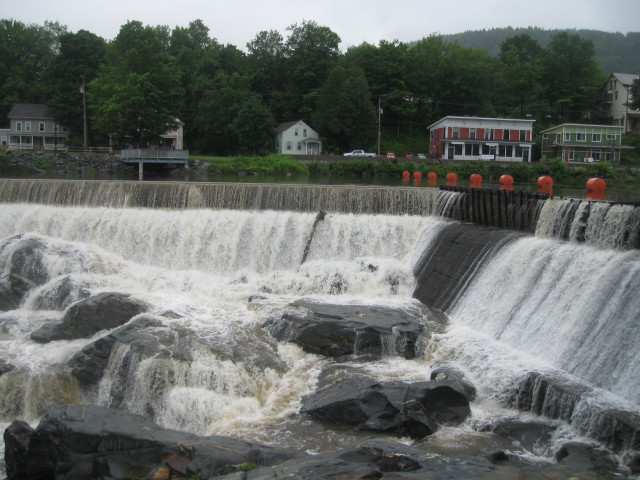
Glacial potholes on the Deerfield River.
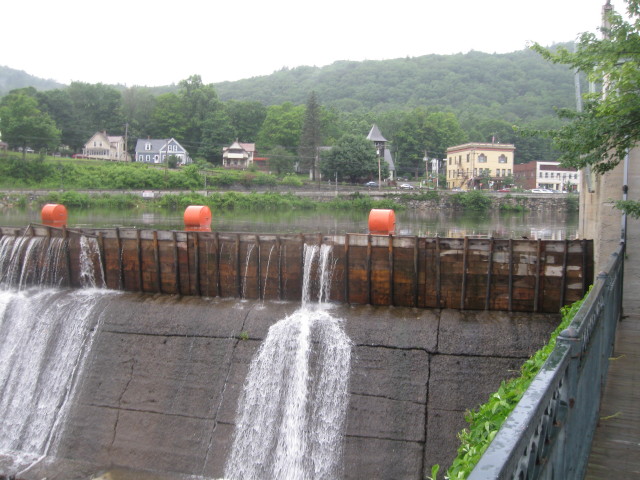
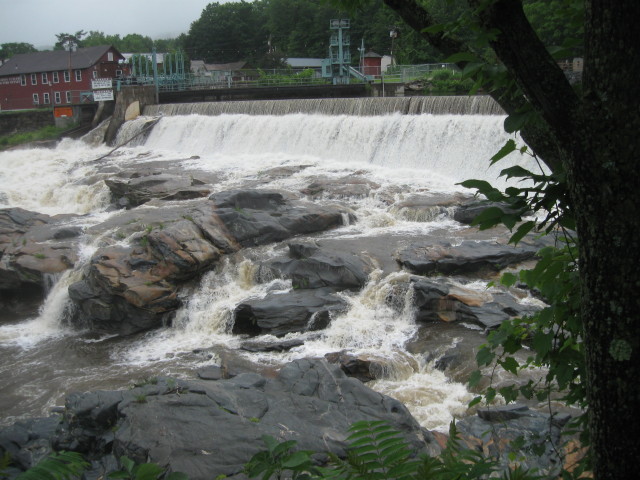
The Shelburne Falls.
Leaving Shelburne
Falls, we continued west bound on Rt 2 and after a while
we crossed into New York state on our way to Albany.
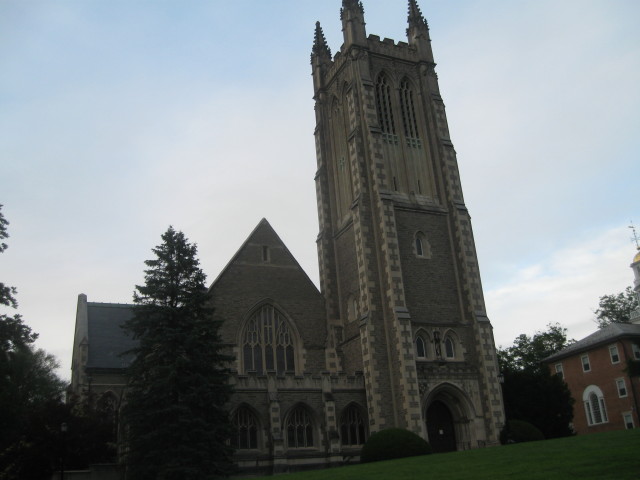
Buildings in a college town along Rt 2.
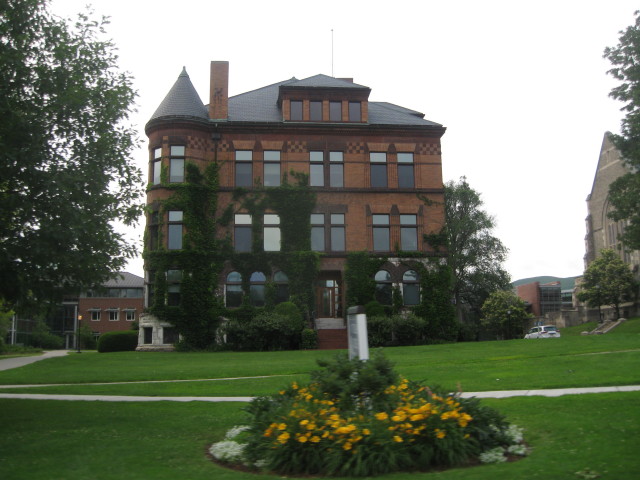
Arriving in Albany we
found and checked into our motel. After unloading our
luggage in our room, we return to the airport to drop
off the rental car. In the seventeen days we traveled
2.5K miles in our car. We took a taxi back to the motel
with the driver giving us an extra long tour of the
countryside. It was to be a short night as we needed to
be at the Amtrak station in a few hours.